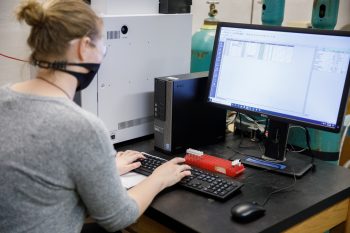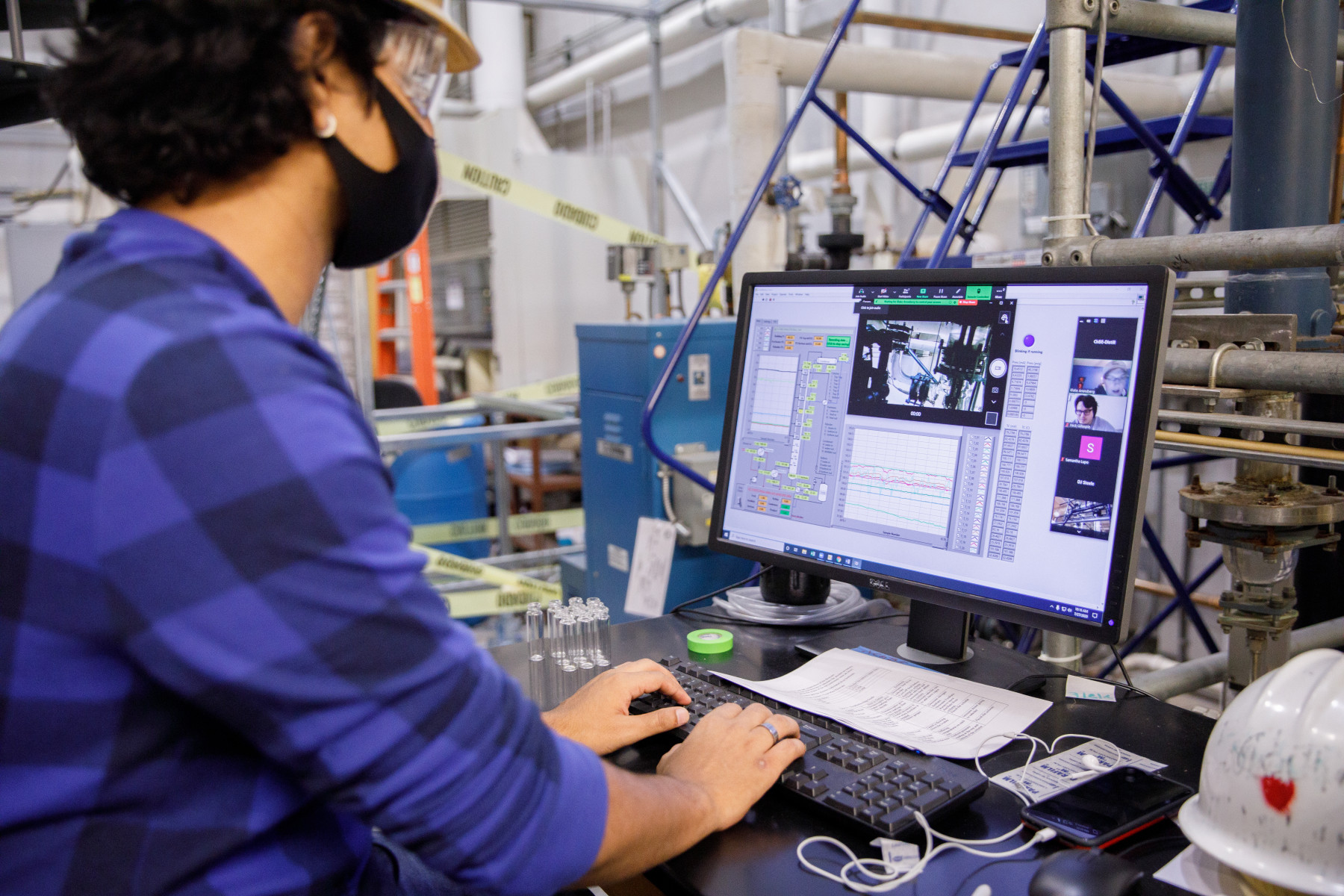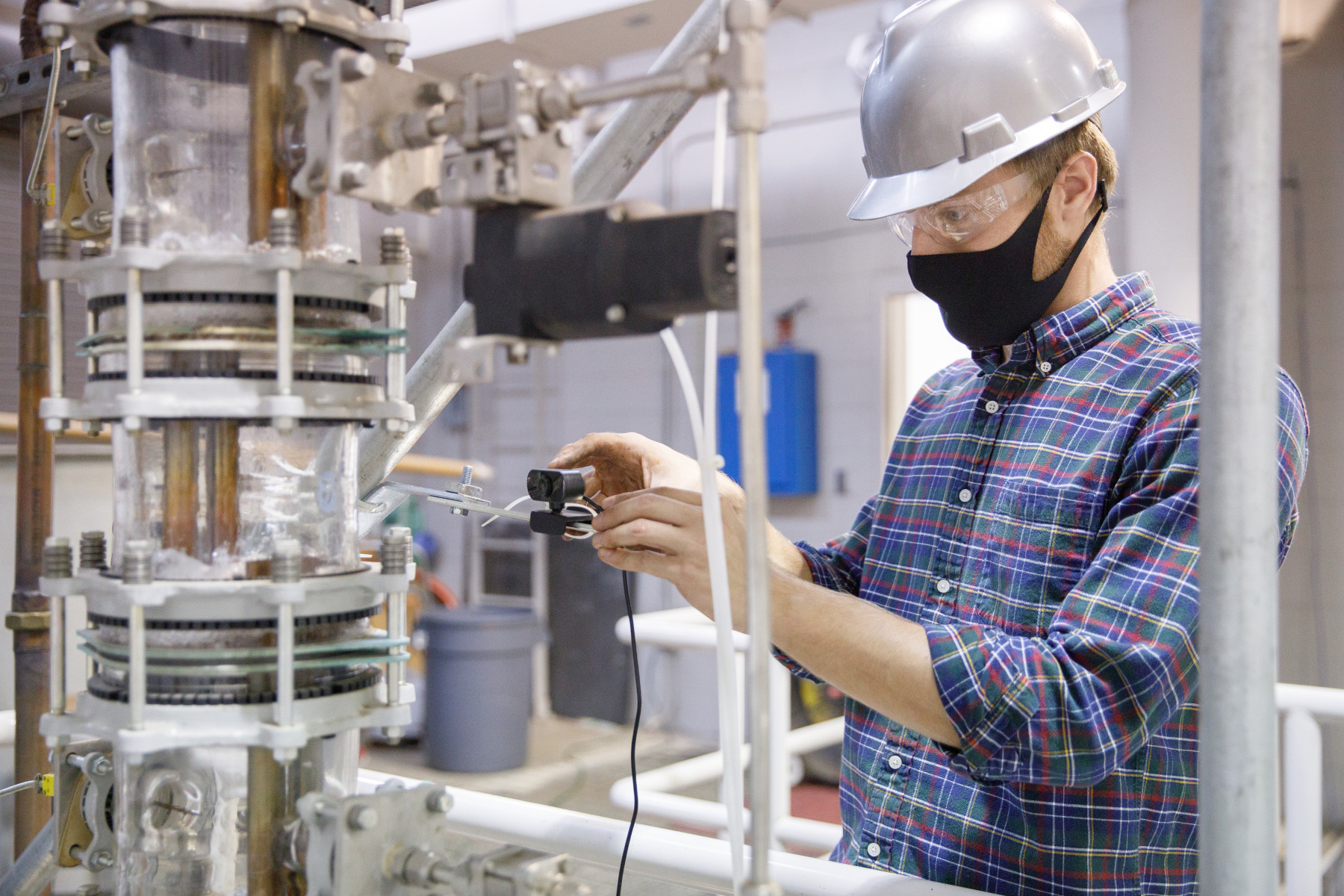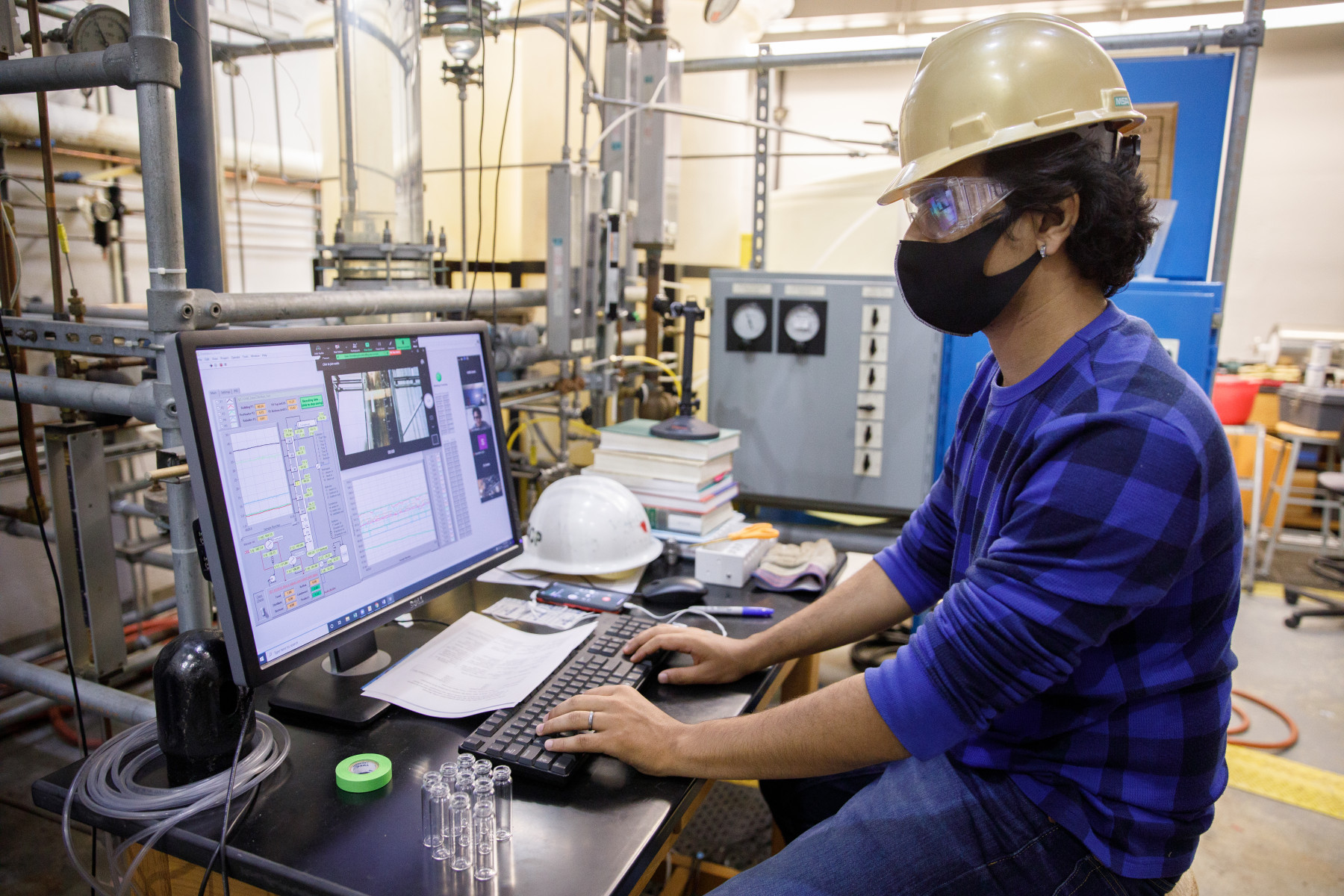Over the summer, chemical and biological engineering faculty were able to bring a long-planned idea to fruition for their students.
For the first time at The University of Alabama, the CHE 323 Operations Laboratory course became a remote lab dependent on teaching assistants and instructors to manage the experiments on campus using directions given by students from a distance.
“We have worked very hard to make the experience as close to in-person as possible, with as much control in the hands of the students as we can,” Dr. Stephen Ritchie said.

Ritchie, an associate professor of chemical and biological engineering, has led the remote lab project that puts students on teams that work together to operate large-scale unit operations experiments through their teaching assistants.
“The TA is serving as their hands, and operating instructions supplied by the team to the TA must be clear and explicit,” Ritchie said. “Diagnostics are critical to ensure equipment is connected as displayed in the supplied process flow diagram.”
The students guide the TAs from a distance through audio and video interaction and written step-by-step procedures. The class stays connected through Zoom channels, a video communications and chat platform. Using this program allows people to enter and leave their meetings as needed, he said.
“Experimental data of interest includes temperatures, pressures, flows and concentrations. Each of these can be measured remotely, or with the help of a TA in the lab. All data is recorded on the console computer that is controlled by the team,” Ritchie said.
In this new format, data acquisition is now automated through LabVIEW. The program records most of the data in an electronic logbook while some is still recorded manually in a notebook.
The class also shares files through Box, a cloud content management system, and the students take exams on Blackboard, a learning management system.
The goal is for the students to control and collect data from their experiments.
“Students take remote desktop control of a computer that is interfaced with the experiment,” Ritchie said. “Experiments in Summer 2020 have included heat exchange, control valve, continuously stirred tank reactor, distillation and sorption. Student groups monitor instrument readings, and to varying degrees, control the experiment.”
The lab was offered to students during both summer sessions. Summer I had 14 students, and there were 17 students in Summer II. Students from as far as Kuwait registered for the course.
“Three of the students who took the class in Summer I served in TA roles in Summer II,” Ritchie said.
One of those students who had the unique opportunity to be involved in both roles is Elise Kaminski, a chemical engineering senior. She had never taken a remote lab before this summer and said it was unlike any course she’d ever taken.
She said students work to design procedures that produce quality experimental data, and TAs execute those plans with attention to lab and equipment safety. TAs only intervene if the instructions they’re given can potentially generate hazardous conditions in the lab.


